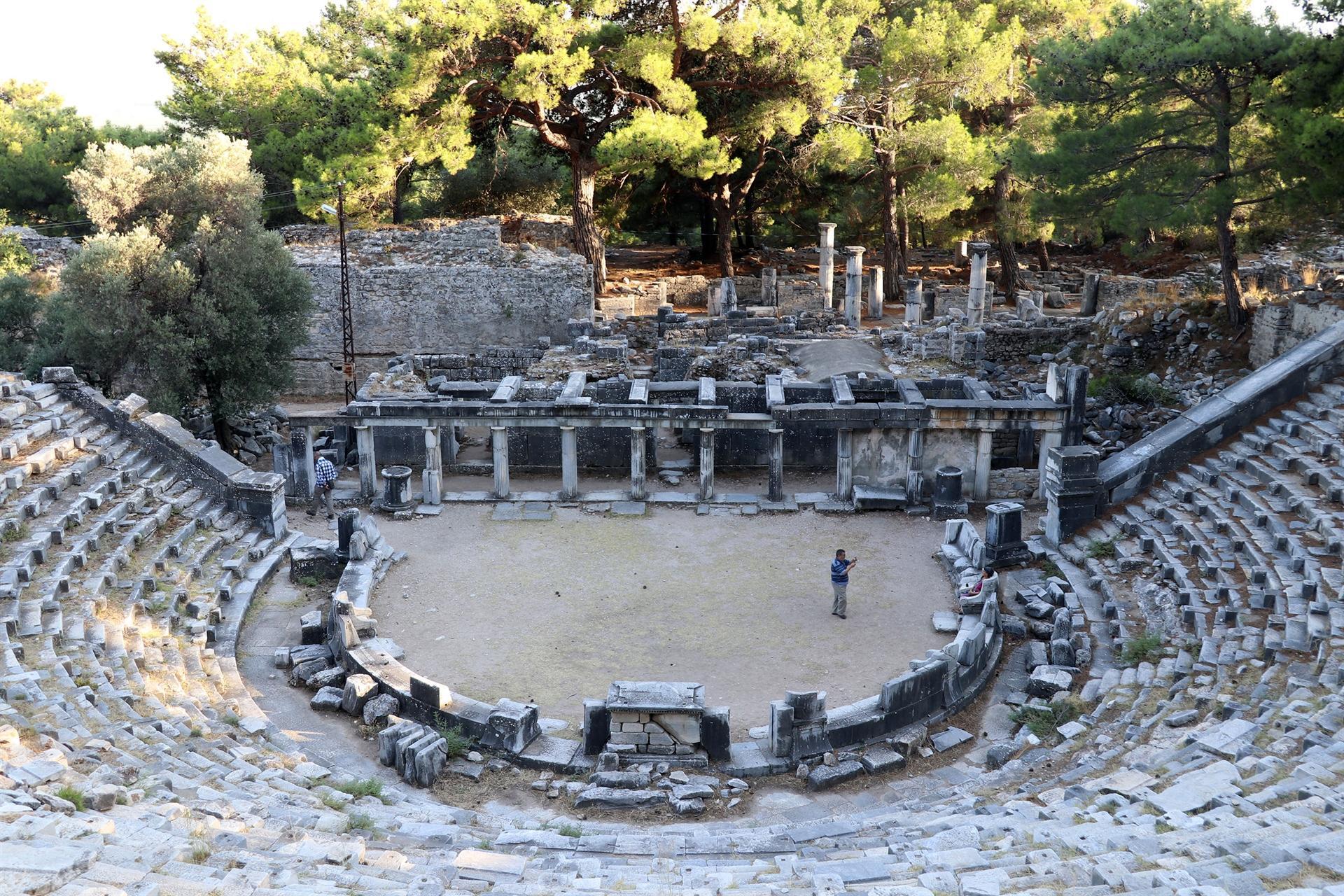
The ancient city of Priene, which is dubbed the “Pompeii of Anatolia” due to its unique plan and well-preserved structures in the western province of Aydın, has seen an increase in the number of visitors after being included in the UNESCO Tentative List of World Heritage on June 6.
İbrahim Hakan Mert, a professor at Uludağ University, is heading the excavations in the ancient city, located on a 370-meter-high rock in the southern slope of Samsun Mount, 15 kilometers from the center of Aydın’s Söke district.
The ancient city is home to the Temple of Athena, Temple of Demeter, Temple of Zeus, an agora, a theater, a bouleuterion, an upper Gymnasium, lower Gymnasium, the Temple of Egypt, a Byzantine-era church as well as residential areas.
Speaking to state-run Anadolu Agency, Mert said the first excavations in the ancient city had been initiated by a German team in 1890 and they have been continuing works since 2014.
He said the most important traces in the ancient city were from the Hellenistic era, with the Roman and Byzantium structures bearing witness that the city was one of the most modern cities.
“This is one of the places where the urban planning system, developed by Hippodamos, an urban designer who grew up in Milet, is ideally applied. It is a very well-preserved city. Because of this preservation, it is likened to the ancient city of Pompeii in Italy. Therefore, it is called the Pompeii of Anatolia in archaeological literature. It is a city where the most typical structures of the Late Classical and Hellenistic periods are found,” Mert said.
He said they focused on an ancient cemetery this year, and that there, which was defined as the city of the dead, they had gathered information about the culture in the era.
“Our work paid off, as the city was included in the UNESCO Tentative list. It made us very happy. It will play a very important role in the promotion of the ancient city. We expect to see more visitors. We have recently seen the increase in the number of visitors. From now on we will work to be included in the main list,” he added.
Ramy Atassi, a French visitor, said they travelled to all places in Turkey which are on the tentative and permanent list of UNESCO. He said the ancient city of Priene was fascinating, adding: “We found the city very impressive. We respect the founders of the city and think that it is one of the most beautiful cities in the era.”
According to official figures, Priene hosted some 10,000 visitors throughout last year, with the number of visitors skyrocketing to 8,000 only during the three months after the ancient city was added to the UNESCO list in June.
‘Extraordinarily good state of preservation’
“Priene is a city with an extraordinarily good state of preservation. Unlike many other ancient cities in Anatolia, the city was not occupied since Byzantine era. Because of that the city stayed very well-preserved until now and it presents a good view of the reflection of the daily life in ancient times like Pompeii in Italy,” UNESCO says on its website.
“Compared to other excavation sites in Asia Minor, the excavated residential quarters represent an indisputably unique feature of Priene. As a whole, the houses of Priene are a unique ensemble of settlement history and present Hellenistic life to us to a similar degree to that which the Italian Pompeii does for Roman life,” it adds.